The people who use our boards.
364 interviews since 2018
The people who use our boards.
Lacy Morrow
Senior Software Engineer @ TwilioWho are you, and what do you do? What do you like to do outside of work?
I’m Lacy Morrow, a web/software engineer and electronics enthusiast. I’m a web developer by trade and occasionally get to build custom hardware like the Hackpack.
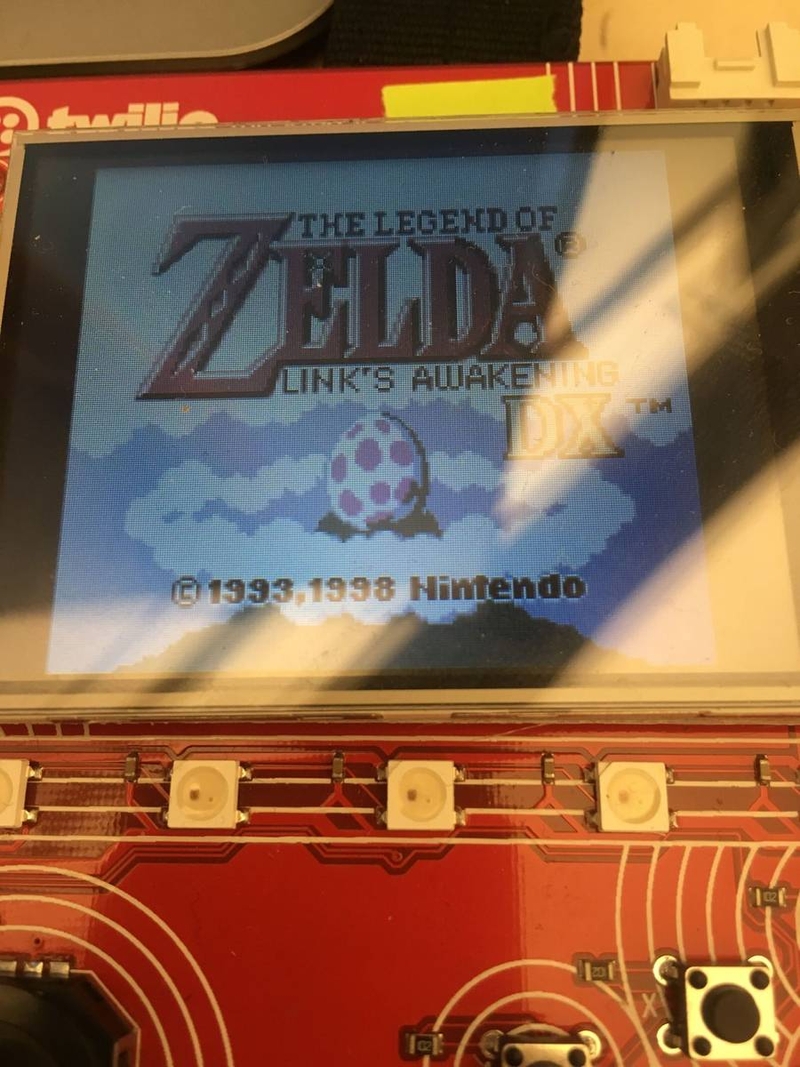
Outside of work I have a handful of open-source projects to keep up with, and whatever free time I have is spent building electronics. My current passion is building and racing (and crashing) FPV drones. It’s like being Superman.
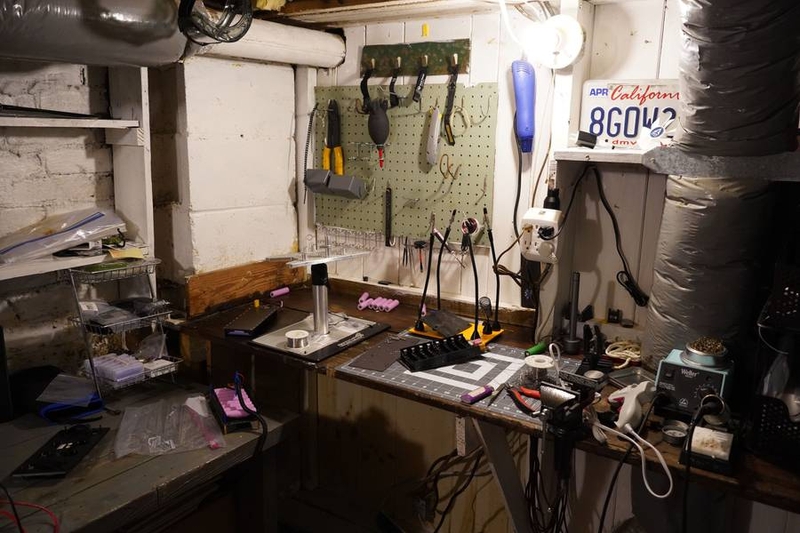
Drone racing took off in 2014, after improved software and battery chemistry made smaller recreational drones possible. These are small quadcopters, about the size of a shoebox, that will hit speeds around 100 mph with ease. Racing was an obvious next step.
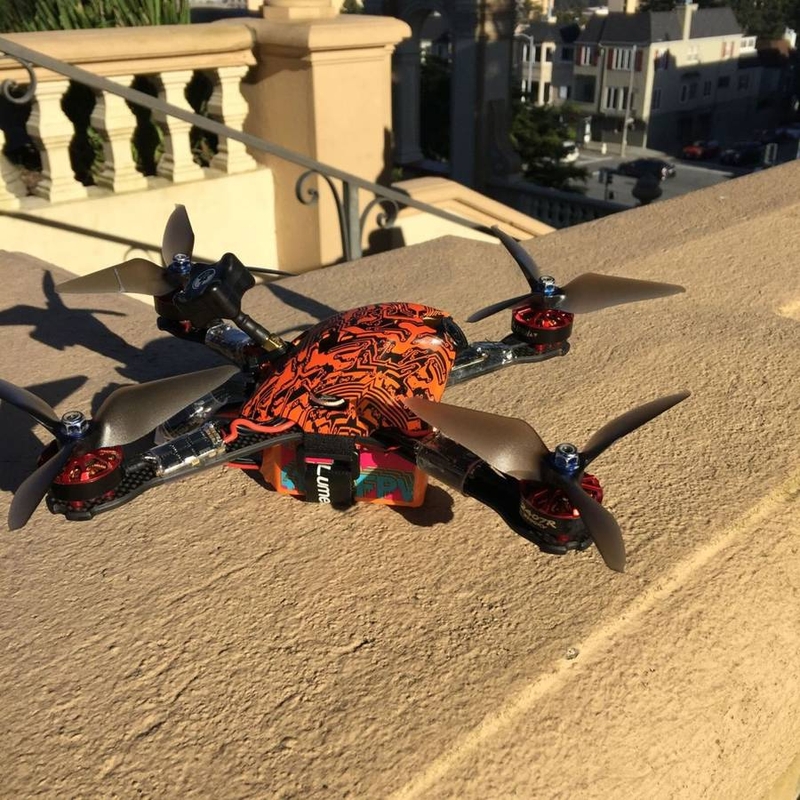
The first drone nationals race was in 2015, and it’s only gotten bigger since then. It’s also trending younger. I believe the winner that year was in his 30s. Next year an eighteen-year-old won, and since 2017 I don’t think anyone above sixteen has been champion.
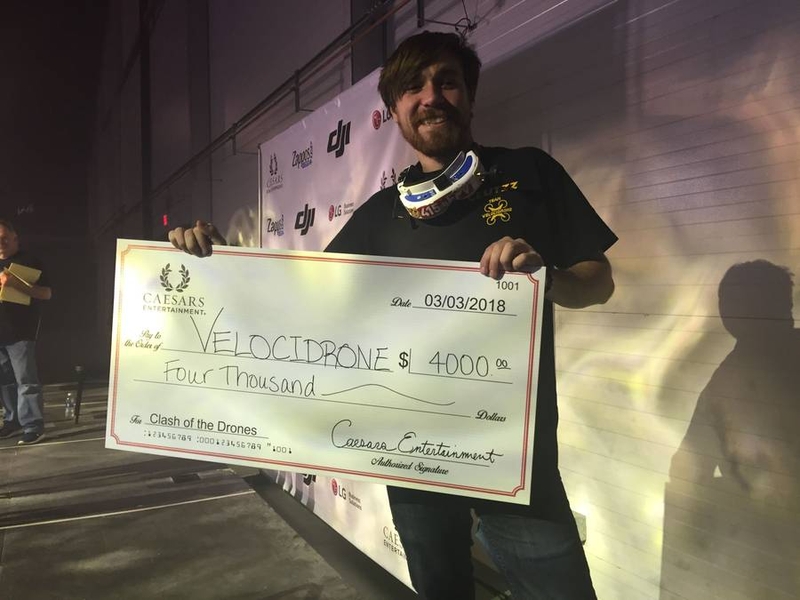
Being the tech hub that it is, the sport became super popular in the San Francisco Bay Area. I quickly got addicted to “being Superman” and found myself going to meetups and race practice with some very talented pilots, eventually moving into a “drone house” with one of the guys from ESPN’s Drone Racing League, SF PV.
I had some amazing experiences in the FPV community: crew for an ornithological documentary, trekking around the US for races, ESPN tryouts in Vegas, and a “DroneTrippin” RV trip filming some of the best pilots in the US. Seeing the popularity elsewhere, my brother and I got together in North Carolina to bring the first sponsored race to Charlotte: The Flymore Invitational at Savona Mill in 2019. Thirty-two pilots gathered in a dusty abandoned warehouse lit up with LED gates to compete for two spots to the 2019 Drone Nationals. We had some big names come out and hosted a viewing party in the bar next door. There’s still some coverage of the race for the curious.
I still maintain a fleet and race occasionally, but I’m out of practice and usually tend to fly for aerial cinematography rather than for competition. Recently I’ve started a company focused on aerial cinematography, Fly5.
There are tons of photos and videos of building, racing, and the FPV community in general on my abandoned Insta and YouTube.
What hardware do you use?
I spend a decent amount of time in an RV on the road. My daily driver for work is a MacBook Pro, and when I’m on the go I use a Trio Max and a Logitech MX Vertical mouse. I’ve also got a third monitor for dev power sessions.
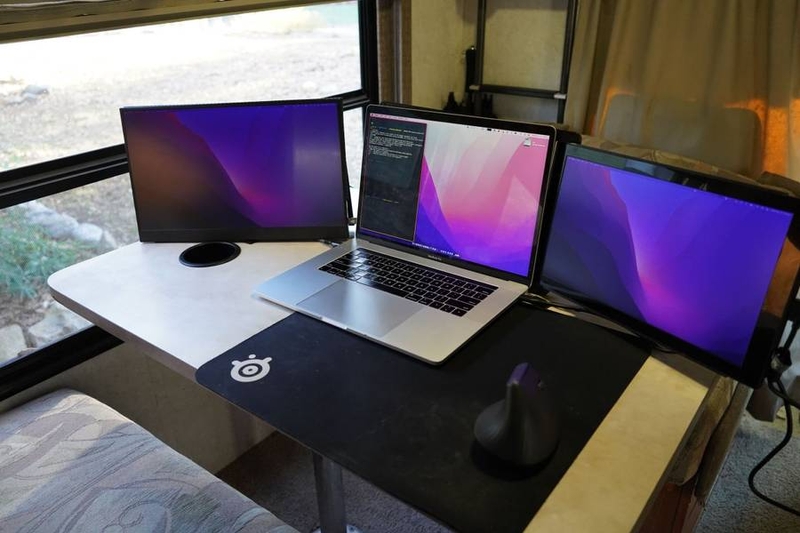
I’m from Charlotte, NC originally and have been living in San Francisco for the past eight years, working for various startups. When COVID began, my company switched to a 100% work-from-home policy. I always had ideas of living the digital nomad life, so when I found myself working remotely already, it just made sense to end my lease and work from the road.
Originally I had planned to get a van, but since California had shut down parks and public water and bathrooms, it made sense to have those amenities myself. Prices were already rising and supply was short, but I found a 2004 Fleetwood Jamboree in good condition and bought it for $20k.
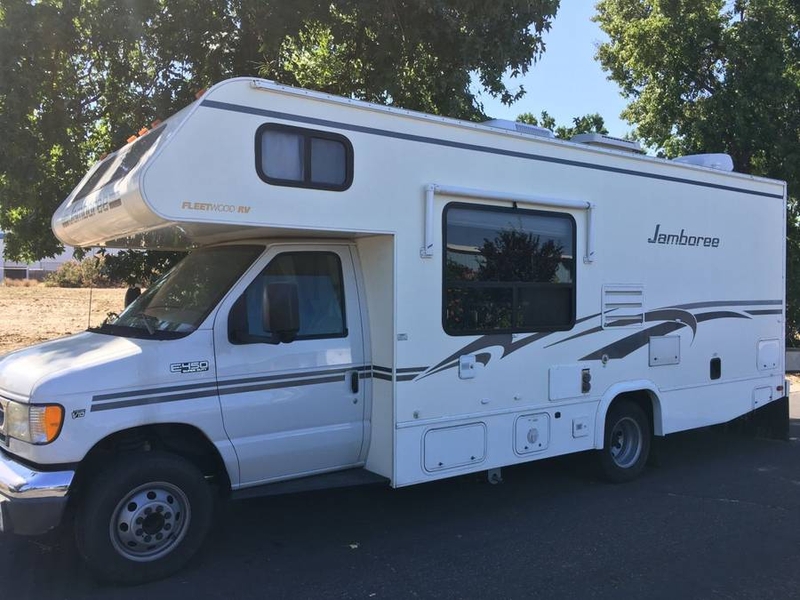
Having proper electronics was a big priority for me. I set up a gaming PC in one of the cabinets and 3D-printed some fancy mounts for my streaming peripherals. An electric skateboard was mounted behind the cab to get around in populated areas, and several racing drones and a DJI Mavic came with me for some aerial footage.
Power was tricky. I had a generator for when I needed it, but it’s noisy and smells like exhaust. I was sleeping on quiet streets and in abandoned parking lots, so that wasn’t always an option. Two large deep-cycle batteries would provide about half a day of laptop charges (MacBooks just inhale electricity), so to augment that I used a custom-built LiPo battery designed by Din, a local FPV pilot.
Networking was also important. I’ve been signed up for Starlink since late 2019 but haven’t been inducted yet, so 90% of my network use was over cellular. To make sure I had no dropouts, I bought an iPhone with dual-SIM support and both AT&T and Verizon unlimited data plans. I had a cellular booster that I used only a handful of times. When I needed to do heavy data-transfers, I used a public Wi-Fi map to find something with decent upload speeds and parked outside. If I couldn’t park near a good signal, I would use my laptop to set up a network repeater, then power it from a big LiPo battery and inverter.
The first trip was south to Malibu, San Diego, and the Grand Canyon, passing through Slab City (the last lawless town in the US). After the test run, I packed my things and moved into the RV full-time. I won’t go through the entire route, but I went as far northwest as possible and then proceeded to zigzag east through the US, stopping at every city and point of interest I cared to. In total, I drove through eleven state capitals, fifteen national parks, and around twenty-five states in about six months before ending up back in Charlotte at the end of 2020. I have photos from the entire trip on Instagram @GoSeeThings.
When not traveling, I try to be as ergonomic as possible. My work-from-home setup has three computers running on a standing desk. For work I mount my laptop and use an ultrawide monitor, a ZSA Moonlander, trackpad, and a Ploopy 3D-printed trackball mouse.

If I spin 90˚ to my gaming/streaming setup, I’ve got a custom Comino Otto PC running a 3090 and a 5900X with a Planck EZ keyboard for typing, but for gaming I’ve switched to using an Azeron keypad with a joystick on the thumb. There’s a GoXLR and Stream Deck for audio and control, and a couple of Key Lights to brighten up the space.
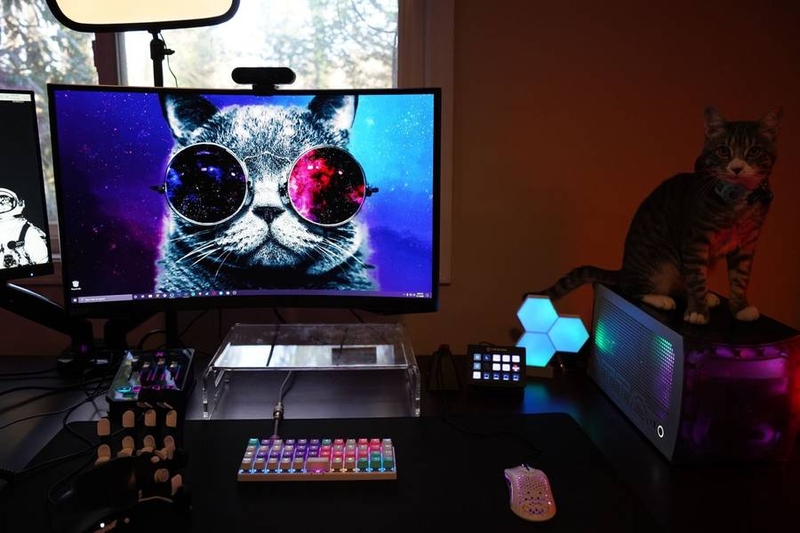
I also have a server in the closet across the room that I use for streaming, storage, automation, etc. It’s a decent machine, but I’m ashamed to say I never mounted the dual GPUs. They’re just lying down in the case, connected with risers. You wouldn’t want to shake it.
And what software?
I still do 90% of my dev work in Sublime Text and use Hyper terminal only because it’s prettier. I make heavy use of Docker and VirtualBox for running and testing with virtualization. BetterSnapTool and TripMode help manage my windows and data on MacOS and, since my server doesn’t have a mouse or keyboard attached, I use Synergy as a virtual KVM switch.
What’s your keyboard setup like? Do you use a custom layout or custom keycaps?
I have custom layouts for both keyboards, and I’m constantly tweaking them to try to make things more efficient. Since I work with virtual machines a lot, compatibility with Windows and MacOS is important to me.
The Moonlander uses a mostly-symmetrical layout that allows me to do most things with either single hand.
For the Planck EZ I use this layout, optimized for gaming. The keycap colors are super important for performance.
What would be your dream setup?
There’s a two-inch bundle of wires running from my desk to the closet with multiple HDMI, USB, and aux cords. I’d love to replace them all with a single cord like the Corning optical cables. Since we’re dreaming, I’d like a rack mount and a server upgrade. Can it come with LEDs?




